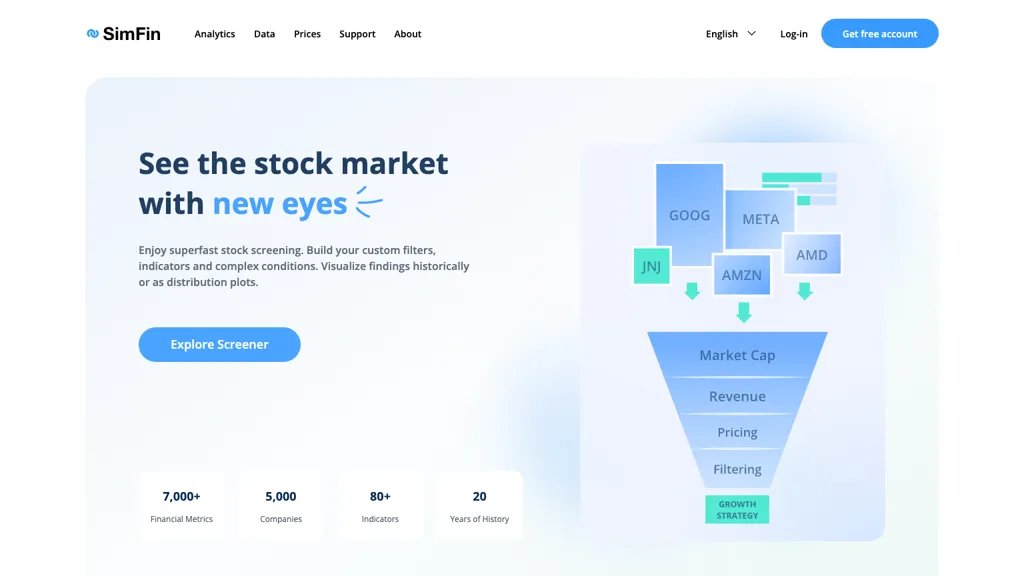20 Excellent Info To Picking AI Stock Predictions Analysis Websites
Top 10 Suggestions To Evaluate Ai And Machine Learning Models For Ai Stock-Predicting And Analyzing PlatformsTo guarantee accuracy, reliability, and actionable insights, it is essential to assess the AI and machine-learning (ML) models employed by prediction and trading platforms. Poorly designed or overhyped models can lead to flawed predictions as well as financial loss. Here are the top 10 strategies for evaluating AI/ML models for these platforms.
1. Find out the intent and method of this model
Clear objective: Determine whether the model was developed to be used for trading short-term, long-term investments, sentiment analysis or risk management.
Algorithm Transparency: Check if the platform reveals what kinds of algorithms they employ (e.g. regression, neural networks of decision trees and reinforcement-learning).
Customization. Determine if the model is able to be modified according to your trading strategy, or your risk tolerance.
2. Assess the performance of your model using by analyzing the metrics
Accuracy - Check the model's prediction accuracy. However, don't solely rely on this metric. It may be inaccurate on financial markets.
Accuracy and recall. Examine whether the model can accurately predict price changes and reduces false positives.
Risk-adjusted return: Examine whether the model's predictions result in profitable trades after taking into account risk (e.g., Sharpe ratio, Sortino ratio).
3. Test the model using backtesting
Backtesting your model with the data from the past allows you to compare its performance with previous market conditions.
Examine the model using data that it has not been trained on. This can help stop overfitting.
Analyzing scenarios: Evaluate the model's performance in different market conditions (e.g., bear markets, bull markets and high volatility).
4. Check for Overfitting
Overfitting sign: Look for overfitted models. They are the models that do extremely good on training data but poor on data that is not observed.
Regularization techniques: Find out whether the platform is using methods like normalization of L1/L2 or dropout in order to prevent overfitting.
Cross-validation: Make sure the platform employs cross-validation in order to test the model's generalizability.
5. Review Feature Engineering
Relevant Features: Examine to determine if the model has significant characteristics. (e.g. volume prices, technical indicators, price and sentiment data).
Feature selection: Ensure the platform selects characteristics that have statistical significance, and avoid redundant or irrelevant information.
Updates to features that are dynamic: Find out if the model can adapt to changes in market conditions or to new features as time passes.
6. Evaluate Model Explainability
Model Interpretability: The model needs to give clear explanations of its predictions.
Black-box model: Beware of platforms which make use of models that are too complicated (e.g. deep neural networks) without explaining tools.
User-friendly insights: Check if the platform offers actionable insights in a format that traders can understand and utilize.
7. Assess Model Adaptability
Market conditions change. Examine whether the model can adjust to changes in the market (e.g. a new regulation, an economic shift, or a black swan phenomenon).
Continuous learning: Make sure that the platform is regularly updating the model with fresh data in order to improve the performance.
Feedback loops - Ensure that the platform incorporates real-world feedback as well as user feedback to enhance the design.
8. Check for Bias and fairness
Data bias: Ensure that the training data are representative of the market, and free of bias (e.g. excessive representation in certain times or in certain sectors).
Model bias: Check whether the platform monitors the biases of the model's prediction and mitigates them.
Fairness - Make sure that the model isn't biased towards or against particular sector or stocks.
9. Evaluation of the computational efficiency of computation
Speed: Check whether the model can make predictions in real time, or with a minimum of delay. This is particularly important for high-frequency traders.
Scalability: Determine whether the platform can manage several users and massive databases without affecting performance.
Resource usage: Make sure that the model has been optimized to make the most efficient utilization of computational resources (e.g. GPU/TPU use).
Review Transparency & Accountability
Model documentation: Ensure the platform includes an extensive document detailing the model's design and its the process of training.
Third-party auditors: Make sure to see if a model has undergone an independent audit or validation by a third-party.
Error handling: Determine if the platform has mechanisms to identify and fix model errors or failures.
Bonus Tips
Reviews of users and Case Studies Review feedback from users and case studies to assess the performance in real-world conditions.
Trial period - Use the demo or trial version for free to test out the model and its predictions.
Customer Support: Ensure that the platform provides solid technical or models-related support.
With these suggestions You can easily evaluate the AI and ML models on stock prediction platforms, ensuring they are trustworthy and transparent. They should also be aligned with your trading goals. Check out the recommended related site for ai trading tools for website advice including options ai, stock ai, market ai, ai stock market, ai stock trading app, options ai, ai for stock predictions, using ai to trade stocks, using ai to trade stocks, ai investment platform and more.

Top 10 Things To Consider When Evaluating The Ai Trading Platforms' Educational Resources
The users must review the educational materials provided by AI trading and stock prediction platforms in order to fully know the platform and its functions in order to make informed trading choices. Here are the top 10 suggestions to determine the quality and value of these sources:
1. Comprehensive Tutorials & Guides
Tips: Make sure the platform provides instructions or user guides for novice as well as advanced users.
The reason: Users can navigate the platform more efficiently with clear instructions.
2. Webinars Videos, Webinars and Webinars
Look up webinars, video demonstrations, or live training sessions.
Why? Interactive and visual content can make complex concepts easier to grasp.
3. Glossary
TIP: Ensure the platform offers a glossary of AI and financial terminology.
Why? This will help users, and especially beginners, to understand the terms used in the application.
4. Case Studies and Real-World Examples
TIP: Determine whether the platform has instances of how AI models were used in real-world situations.
The reason: Examples of the functionality of the platform as well as its applications are provided to help users better understand the platform's capabilities.
5. Interactive Learning Tools
Explore interactive tools, such as simulators, quizzes and sandbox environments.
Why: Interactive Tools permit users to try out, test their skills and develop without risking money.
6. Regularly updated content
Verify that the educational resources are updated regularly to reflect the latest market trends or regulations, new features and/or changes.
The reason is that outdated information can result in misinterpretations of the platform, or even its incorrect use.
7. Community Forums and Support with
Tip: Search for active community forums or support groups where members can share their knowledge and ask questions.
Why: Expert and peer advice can assist students to learn and resolve issues.
8. Programs of Accreditation and Certification
Find out whether there are any certification programs or accredited training courses offered by the platform.
Why? Recognition of formal education may increase its confidence and inspire users.
9. User-friendliness and accessibility
Tips: Evaluate how the accessibility and ease of use of educational sources are.
Access to content is easy and allows for users to learn at the pace that is most suitable for their needs.
10. Feedback Mechanism for Educational Content
Tip - Check if you can provide feedback to the platform about the educational material.
The reason is that feedback from users can help increase the value and quality of the resources.
Learn in a variety formats
The platform should provide a wide range of options for learning (e.g. audio, video and text) to meet the requirements of different learners.
It is possible to evaluate these aspects to find out whether the AI trading and stock prediction platform offers solid educational tools that can help you maximize the potential of it and make informed trading decisions. Take a look at the most popular what do you think on ai stock trader for site info including ai stock price prediction, trading ai tool, ai in stock market, ai stock analysis, ai stock price prediction, trading ai tool, trading ai tool, ai stock investing, ai stock trader, best ai stocks and more.
